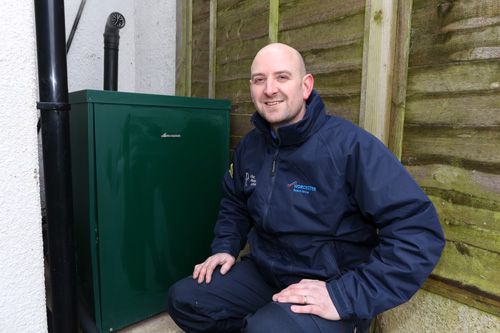

Oil is a cheap and reliable fuel source for homes located off the gas grid, so the easiest option for most homeowners when one oil-fired boiler comes to the end of its life cycle, is to replace it with another.
1. Inspect the pipes
Replacing an oil boiler will naturally involve connecting a new appliance to an existing oil tank and supply pipe – either of which may have been in place for a number of years. These components can become contaminated over time, so oil supply pipes must be inspected for damage on a regular basis. Any deterioration or leaks should be repaired as soon as possible.
Although oil supply pipes are usually made of plastic-coated soft copper, you may occasionally come across those that are made from steel. This material offers additional protection from damage or vandalism, but should be painted to minimise corrosion.
2. Change any filters
Any corrosion within the oil tank or water in the supply can quickly cause the heating system’s oil filter (or filters) to become blocked. This in turn poses a serious risk to the reliability of other components, such as the oil pump or burner. Each oil filter should be checked, cleaned and, if necessary, replaced as part of an annual service to avoid costly repairs further down the line.
3. Going underground
Oil supply pipes can be buried underground, but there are a few factors to consider if this is the case. Pipes must be buried at least 300mm clear of other underground services, such as water and electricity. Joints in buried pipework should also be avoided if at all possible. If they are essential, then don’t forget to provide a permanent point of access.
It’s also important to avoid running an underground oil supply pipe directly into the interior of a building. Instead, the pipe should rise externally, which will allow a remote acting fire valve to be fitted before it enters the building. Where an oil pipe passes through the wall of a building, make sure it runs within a sleeve, such as a larger diameter pipe.
When it comes to checking underground pipes, pressure testing is a good indication of whether or not they are still intact.
4. On the outside
For best performance, external or exposed oil supply pipework should take the most direct route between the oil tank and burner. Avoid high and low points in the pipework, the creation of trip hazards, or anything likely to damage the pipe and joints.
